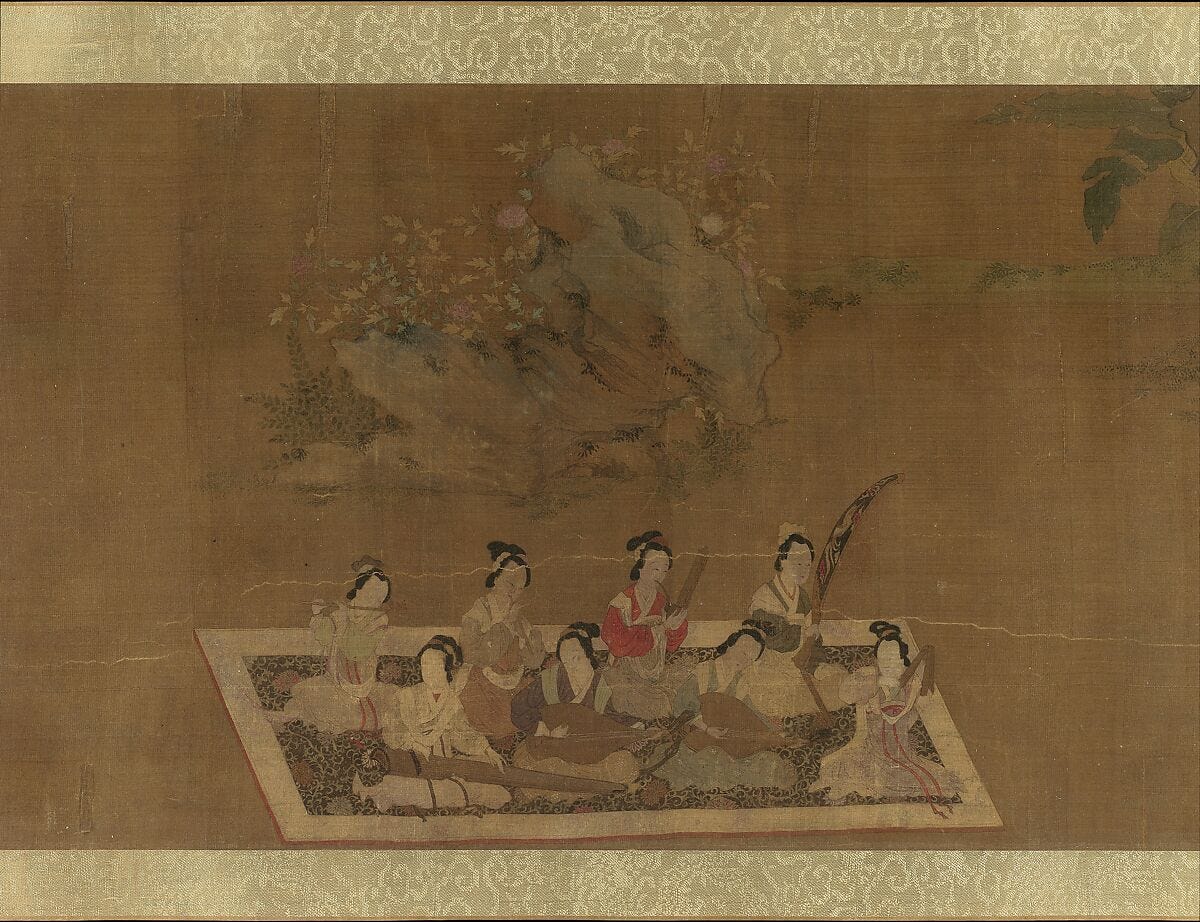This composition was created and recorded yesterday on multitrack guzheng. I was inspired by a painting from the Song Dynasty China called Lady Su Hui and Her Verse Puzzle (photo below). It is a collection in The Met.
“This scene appears in a later copy of a Tang-dynasty painting illustrating the story of a literary legend, Lady Su Hui, who was supposed to have lived in the late fourth century. The dating of the original painting is supported by the types of instruments depicted in it. Both the harp (konghou) and the pipa played with a plectrum disappeared after the Tang.
Front row, left to right: qin, pipa, pipa (played without plectrum), paiban
Back row, left to right: dizi, xiao, sheng, konghou”
Su Hui 蘇蕙, was a Chinese poet of the Middle Sixteen Kingdoms period (304 to 439) during the Six Dynasties period. Her courtesy name is Ruolan (若蘭 Ruò lán). Su is famous for her extremely complex "palindrome" (huiwen 回文) poem, apparently having innovated this genre, as well as producing the most complex example to date. Su Hui is depicted in the Wu Shuang Pu (無雙譜, Table of Peerless Heroes) by Jin Guliang.
According to Wikipedia, Su Hui was known for an important and unusual poem. This was described in contemporary sources as shuttle-woven on brocade, meant to be read in a circle, and consisting of 112 or else 840 characters. By the Tang period, the following story about the poem was current:
Dou Tao of Qinzhou was exiled to the desert, away from his wife Lady Su. Upon departure from Su, Dou swore that he would not marry another person. However, as soon as he arrived in the desert region, he married someone. Lady Su composed a circular poem, wove it into a piece of brocade, and sent it to him.
Another source, naming the poem as Xuanji Tu (Picture of the Turning Sphere), claims that it was a palindromic poem comprehensible only to Dou (which would explain why none of the Tang sources reprinted it), and that when he read it, he left his desert wife and returned to Su Hui.
The text of the poem was circulated continuously in medieval China and was never lost, but during the Song dynasty it became scarce. The 112 character version was included in early sources. The earliest excerpts of the 840 character version date from a 10th-century text by Li Fang. Several 13th century copies were attributed to famous women of the Song dynasty, but falsely so. In the Ming dynasty the poem became quite popular and scholars discovered 7,940 ways to read it. It was also mentioned in the story Flowers in the Mirror. The poem is in the form of a twenty-nine by twenty-nine character grid, and can be read forward or backwards, horizontally, vertically, or diagonally, as well as within its color-coded grids.
If you want to take a look at the poem of Picture of the Turning Sphere, click here. It is an utterly incredible piece of art!
Wu Fei 吴非
Wufeimusic.com












